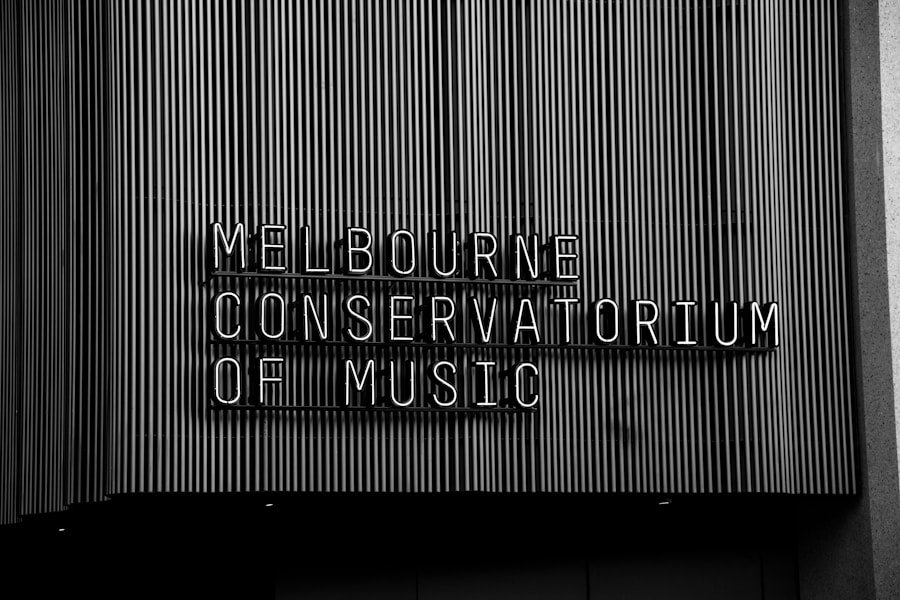The music industry is a vibrant tapestry woven from the threads of creativity, commerce, and culture. It encompasses a wide array of professionals, from artists and producers to marketers and distributors, all working together to bring music to the masses. As you delve into this dynamic world, you’ll discover that it is not just about the sound; it’s about the stories behind the songs, the emotions they evoke, and the connections they foster.
The industry has evolved significantly over the decades, adapting to changes in technology, consumer behavior, and cultural trends. Understanding this evolution is crucial for anyone looking to navigate the complex landscape of music today. As you explore the music industry, you’ll find that it is a reflection of society itself.
It mirrors our joys, struggles, and aspirations, often serving as a soundtrack to our lives. The industry has seen monumental shifts, particularly in recent years, as digital technology has transformed how music is created, distributed, and consumed. This transformation has opened up new opportunities for artists while also presenting challenges that require innovative solutions.
By examining these changes, you can gain valuable insights into the current state of the music industry and what lies ahead.
Key Takeaways
- The music industry has undergone significant changes with the rise of digital distribution and streaming services.
- Streaming services have had a major impact on music consumption, leading to changes in how people discover and listen to music.
- Social media plays a crucial role in music promotion, allowing artists to connect with fans and reach new audiences.
- Technology has greatly influenced music production, leading to new possibilities and innovations in creating and recording music.
- The future of the music industry will continue to be shaped by advancements in technology, changes in marketing and promotion strategies, and shifts in how music is consumed.
The Rise of Digital Distribution
Digital distribution has revolutionized how music reaches listeners. Gone are the days when physical albums dominated the market; now, music is just a click away. You can access an entire library of songs from your smartphone or computer, making it easier than ever to discover new artists and genres.
This shift has democratized music distribution, allowing independent musicians to share their work without the need for a major label. Platforms like Bandcamp and SoundCloud have emerged as vital tools for artists seeking to connect with audiences directly. However, this rise in digital distribution also comes with its own set of challenges.
While it has lowered barriers to entry for many artists, it has also led to an oversaturated market where standing out becomes increasingly difficult. You may find yourself sifting through countless tracks to find something that resonates with you. Additionally, the revenue model for digital distribution often favors platforms over artists, leading to ongoing debates about fair compensation in the industry.
As you navigate this landscape, it’s essential to understand both the opportunities and obstacles that digital distribution presents.
The Impact of Streaming Services

Streaming services have become the dominant force in music consumption today. Platforms like Spotify, Apple Music, and Amazon Music have changed how you listen to music, offering vast libraries at your fingertips for a monthly subscription fee. This convenience has reshaped your listening habits; you can create playlists, discover new artists through curated recommendations, and even share your favorite tracks with friends instantly.
The impact of streaming on the music industry is profound, influencing everything from how artists release their work to how they engage with fans. Yet, while streaming services have made music more accessible than ever, they have also sparked discussions about artist compensation. Many musicians find that the revenue generated from streams is significantly lower than what they would earn from physical sales or downloads.
This has led some artists to seek alternative revenue streams, such as merchandise sales or live performances. As you consider the implications of streaming on the industry, it’s important to recognize both its benefits and its drawbacks for artists and listeners alike.
Changes in Music Consumption
| Year | Physical Sales (in millions) | Digital Sales (in millions) | Streaming (in billions of streams) |
|---|---|---|---|
| 2015 | 125 | 103 | 317 |
| 2016 | 103 | 89 | 431 |
| 2017 | 89 | 75 | 618 |
| 2018 | 77 | 61 | 809 |
| 2019 | 65 | 51 | 1,010 |
The way you consume music has undergone a seismic shift in recent years. With the advent of smartphones and high-speed internet, you can now listen to your favorite songs anytime and anywhere. This shift has led to a decline in traditional album sales and a rise in single-track purchases and streaming.
You may find yourself curating personalized playlists rather than committing to full albums, reflecting a more fragmented approach to music consumption. Moreover, this change in consumption patterns has influenced how artists create their music. Many are now focusing on producing singles rather than full albums, aiming to capture your attention quickly in a fast-paced digital environment.
This trend has also led to an increase in collaborations between artists across genres, as they seek to tap into each other’s fan bases and create buzz around their releases. As you navigate this new landscape of music consumption, consider how these changes affect your relationship with music and the artists you love.
The Role of Social Media in Music Promotion
Social media has become an indispensable tool for promoting music in today’s digital age. Platforms like Instagram, TikTok, and Twitter allow artists to connect directly with their fans, share behind-the-scenes content, and promote new releases in real time. You may find yourself following your favorite artists on these platforms, eagerly awaiting updates about their latest projects or upcoming shows.
This direct line of communication fosters a sense of community and engagement that was previously unattainable. However, while social media offers unprecedented opportunities for exposure, it also requires artists to be savvy marketers. You may notice that many musicians invest significant time in crafting their online personas and engaging with fans through creative content.
This can be a double-edged sword; while it allows for greater visibility, it can also lead to burnout as artists juggle their creative work with the demands of maintaining an online presence. As you observe this interplay between artistry and marketing on social media, consider how it shapes your perception of the artists you admire.
The Influence of Technology on Music Production

Technology has profoundly influenced how music is produced today. With advancements in software and hardware, you can create high-quality recordings from the comfort of your home studio or even on your laptop. Digital audio workstations (DAWs) like Ableton Live and Logic Pro have made it easier for aspiring producers to experiment with sound and bring their musical visions to life.
This accessibility has led to a surge in home recording and independent production, allowing more voices to be heard in the industry. However, this democratization of music production also raises questions about quality and authenticity. With so many tools at your disposal, it can be tempting to rely heavily on technology rather than honing traditional musical skills.
While technology can enhance creativity, it’s essential to strike a balance between utilizing these tools and maintaining a genuine connection to your craft. As you explore the influence of technology on music production, consider how it shapes not only the sound of contemporary music but also the skills required to succeed in this ever-evolving landscape.
Shifts in Music Marketing and Promotion
The marketing landscape for music has transformed dramatically in recent years. Traditional methods such as radio play and physical advertising have given way to more innovative strategies that leverage digital platforms and data analytics. You may notice that many artists now focus on targeted advertising campaigns on social media or collaborate with influencers to reach new audiences.
This shift allows for more personalized marketing efforts that resonate with specific demographics. Moreover, data analytics play a crucial role in shaping marketing strategies today. By analyzing listener behavior on streaming platforms or social media engagement metrics, artists can tailor their promotional efforts to maximize impact.
This data-driven approach enables you as a listener to discover new music that aligns with your tastes while helping artists refine their marketing strategies for better results. As you observe these shifts in music marketing and promotion, consider how they influence your own discovery process as a fan.
The Future of the Music Industry
Looking ahead, the future of the music industry is both exciting and uncertain. As technology continues to evolve at a rapid pace, new opportunities will emerge for artists and listeners alike. You may witness further advancements in virtual reality concerts or immersive listening experiences that redefine how you engage with music.
Additionally, as discussions around artist compensation gain momentum, there may be shifts toward more equitable revenue models that benefit creators. However, challenges will persist as well. The oversaturation of content will continue to make it difficult for emerging artists to gain visibility amidst established names.
As a listener, you may find yourself navigating an ever-expanding sea of choices while seeking out authentic connections with new talent. Ultimately, the future of the music industry will depend on how well it adapts to these changes while remaining true to its core mission: connecting people through the power of music. As you reflect on this journey through the evolving landscape of the music industry, consider how your role as a listener shapes its future trajectory.
